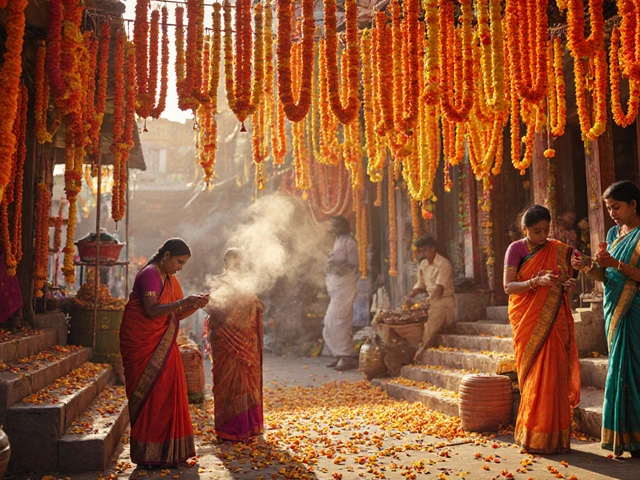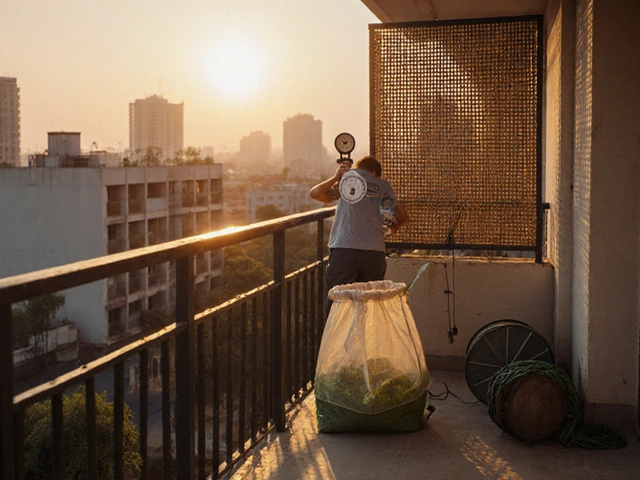Auspicious Flowers: Meaning, Care & Top Picks for Indian Gardens
Ever walked into a temple or a wedding and felt the vibe of certain blossoms? In India, a few flowers are more than just pretty – they’re believed to bring good luck, health, and prosperity. If you want a garden that looks great and feels positive, knowing which flowers are considered auspicious is a good start.
First, let’s clear up why some flowers earn this reputation. It’s not magic; it’s culture, history, and a bit of symbolism. Marigold, for example, is bright orange and looks like a sunburst. That color is linked to wealth and the sun’s energy. Lotus, with its pure white or pink petals, stands for spiritual growth and purity. Jasmine’s sweet scent is tied to love and divine blessings. Knowing these stories helps you pick the right bloom for the right occasion.
What Makes a Flower Auspicious?
Two things decide a flower’s status: the myths around it and how it’s used in rituals. Ancient texts, folk tales, and temple practices all feed into the list. Colors matter a lot – red, yellow, and white are the most common because they’re seen as pure, vibrant, and safe. Also, the season can boost a flower’s luck factor. A blossom that thrives during a festival often becomes part of that celebration’s identity.
In practical terms, an auspicious flower should be easy to grow in your local climate, stay healthy with minimal effort, and fit the space you have. If a plant needs a lot of water but you live in a dry area, it won’t bring you peace of mind – even if it looks beautiful.
Top Auspicious Flowers for Your Home Garden
Marigold (Tagetes) – This is the go‑to for most Indian ceremonies. It loves full sun and tolerates a range of soils. Plant marigold in groups for a bright, lucky border.
Lotus (Nelumbo nucifera) – Ideal if you have a pond or a water feature. Lotus needs warm temperatures and plenty of sunlight. Even a small container pond can host a few stems and add a spiritual touch.
Jasmine (Jasminum) – Perfect for hanging baskets or trellises. Jasmine likes warm, well‑drained soil and moderate watering. Its fragrance works wonders in the evenings, creating a calm atmosphere.
Hibiscus (Hibiscus rosa‑sinensis) – Often used in rituals for its large, bold flowers. Hibiscus thrives in sunny spots and can tolerate mild frost, making it versatile across India’s zones.
Chrysanthemum (Chrysanthemum morifolium) – A white or yellow chrysanthemum symbolizes longevity and is common in South Indian festivals. It prefers cooler weather, so plant it in early autumn for a winter bloom.
To keep these flowers thriving, stick to a few basic steps: use good compost, water them early in the morning, and remove spent blooms regularly. This encourages more growth and keeps the garden looking neat for any puja or ceremony.
Finally, remember that the real power of these flowers comes from the care you give them. When you plant with intention, your garden becomes more than a decorative space – it turns into a small sanctuary that reflects your hopes and traditions.
Ready to add a touch of luck to your garden? Pick one or two of the above blooms, follow the simple care tips, and enjoy the sense of well‑being that comes with every fresh flower.
Which Is the Luckiest Flower in India? Discover Spiritual and Cultural Wonders
Explore India’s most cherished lucky flower, uncover ancient traditions, surprising science, and practical ways to invite luck and positivity with flowers.
About
Flower Gardening
Latest Posts


The First Essential Tool Every Gardener Needs
By Alden Thorne Apr 16, 2025

Best Liquid to Water Plants: What Actually Works?
By Alden Thorne May 9, 2025

How to Grow Vegetables on a Balcony: A Practical Guide
By Alden Thorne Oct 18, 2025

